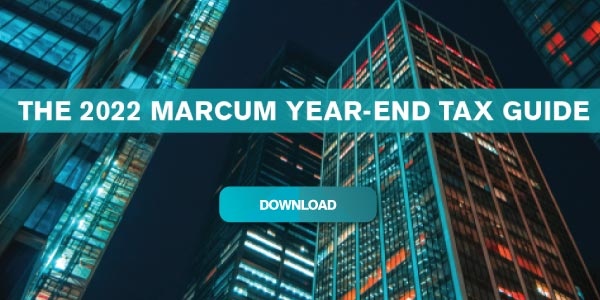The 2023 Nonprofit Industry Outlook: Looming Concerns and Reasons for Optimism
As the COVID-19 pandemic appears to end, nonprofits find themselves under greater scrutiny and subject to more uncertainty than in previous decades. That’s despite the nonprofit industry providing unprecedented funding and value to the public.
Nonprofits planning for 2023 will need to reconcile with the push towards new technologies like e-filing, the absence of resolutions to IRS correspondences, an increase in federal and state scrutiny, and the uncertainty around finalized regulations for Donor Advised Funds (DAFs) and group exemption requests.
Looming Concerns
Digital Growing Pains
COVID pushed many industries into new digital spaces and the Service is no exception, having broadened its e-filing requirements for Forms 4720, 8868, 990-EZ, 990, and 990-PF. This change may force entities to rely on specified tax return preparers, as mandated under Section 6011(e)(3), unless a hardship waiver request is granted. Affected entities will need to plan ahead in order to budget for this compliance requirement or seek out pro-bono support. The Service is beginning to host and maintain compliance returns on its website, allowing for more prompt corrections to resolve e-filing issues and inconsistencies within the Business Master File.
Stuck on Hold
While nonprofits continue to face additional transparency and electronic requirements to submit timely and accurately, the Service made little effort to alleviate some of the burden associated with resolving late filing penalty assessments. In mid-2022, Notice 2022-36 was issued, automatically waiving penalties related to late filings for 2020 and 2021. However, nonprofits were excluded from this resolution, as it did not cover late filing notices for Forms 990 or 990-PF. Nonprofits still face considerable obstacles — including the federal government’s massive correspondence backlog and extremely high call volumes — that can result in lengthy wait times and even disconnection. Addressing the unnerving automatic notices issued by the Service will likely remain difficult into 2023.
Onerous Admin
Nonprofits and their advisers will continue struggling to comply with additional government requirements relating to the Service’s efforts to correct erroneous or missing data within its Exempt Organizations Business Master File system. The Service wants nonprofits to be correctly categorized based on newly updated group rulings, which will require exempt organizations to accomplish significant additional administrative work. Public interest continues to bring additional scrutiny to charitable organizations and their tax-exempt status, including by Congress. Churches, donor advised funds, and private foundations will continue to find themselves subject to mission and purpose examinations.
Good Intentions
The use of DAFs has grown exponentially since their introduction in 2016. The top five DAFs now manage more than $160 billion in assets and annually distribute more than $10.3 billion in grants. The Accelerating Charitable Efforts Act (ACE), included in Congress’s fiscal year 2023 budget, contains provisions that would impact how and when DAFs distribute funds. Unknowns remain concerning contributor disclosures and definitions for qualified DAFs and qualified community foundation DAFs – with each category having different reporting requirements. Under the proposed regulations, non-cash donations would not be allowed as charitable donations until the property is sold and the cash is distributed, while the treatment of non-cash contributions remains in question.
Still Waiting
After more than two years waiting for additional guidance following the Service’s suspension of group exemption letters, the Service remains unable to accept new requests for group exemptions. Going into 2023, nonprofits will need to continue to refer to the pending publication of Rev. Proc. 80-27, while taxpayers await the finalized revenue procedure or other guidance. The final guidance will include clarification of the subordinate’s accounting periods, as well as the 15-month rule found within Section 508 for Section 501(c)(3) subordinates. Further, three new Service centers will be presented for filing purposes but the characteristics of these centers remain unknown.
Reasons for Optimism
More Resources, Fewer Problems
While even familiar territory such as e-filing and responding to IRS correspondences has become more daunting, legislation was passed to increase IRS resources and staffing. Much remains unclear as to how funding will be allocated to alleviate the major shortage of resources in the nonprofit arena, but hopefully the hiring of more agents will help solve some of the problems organizations continue to encounter in reaching the Service to address questions.





















